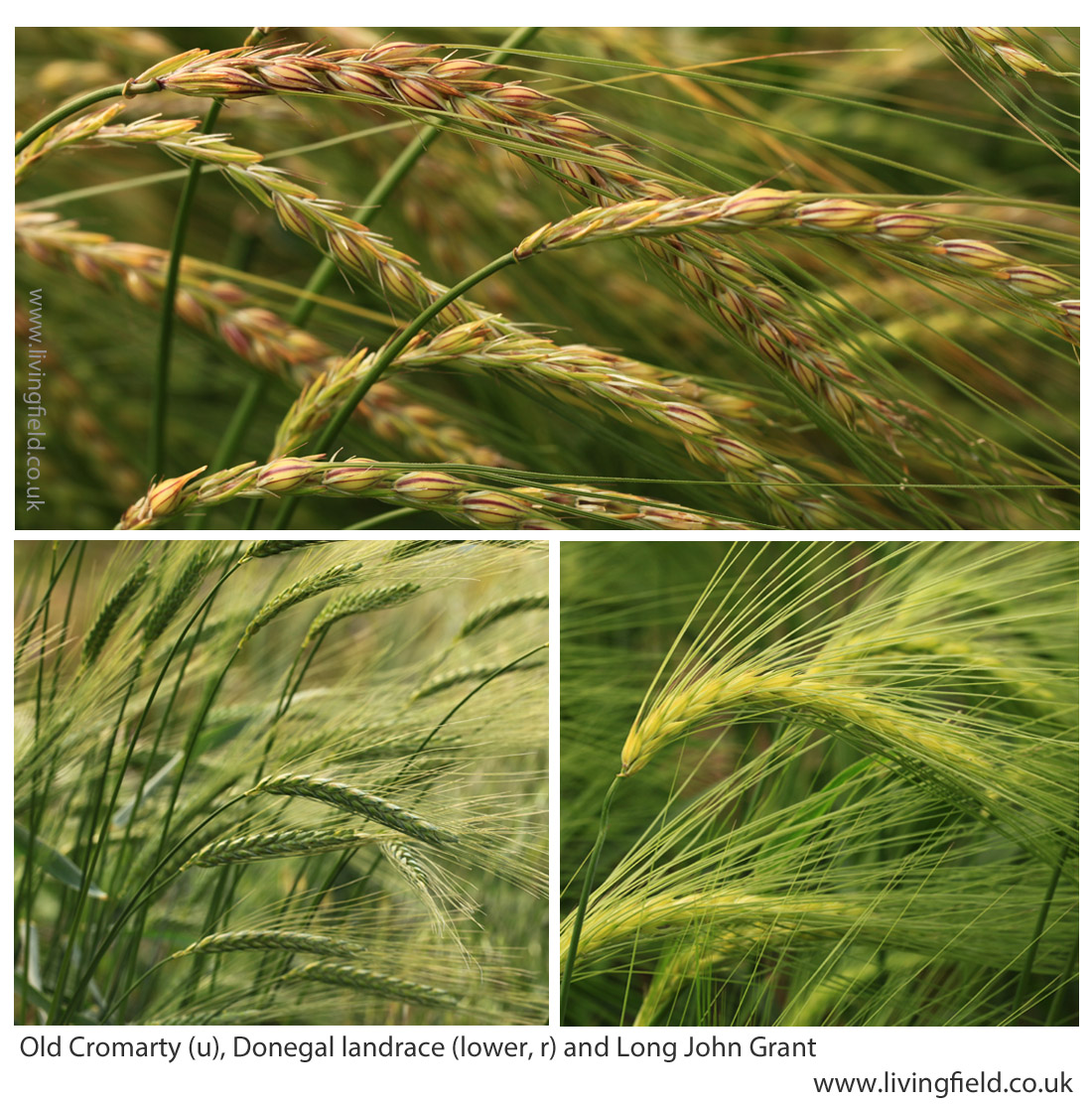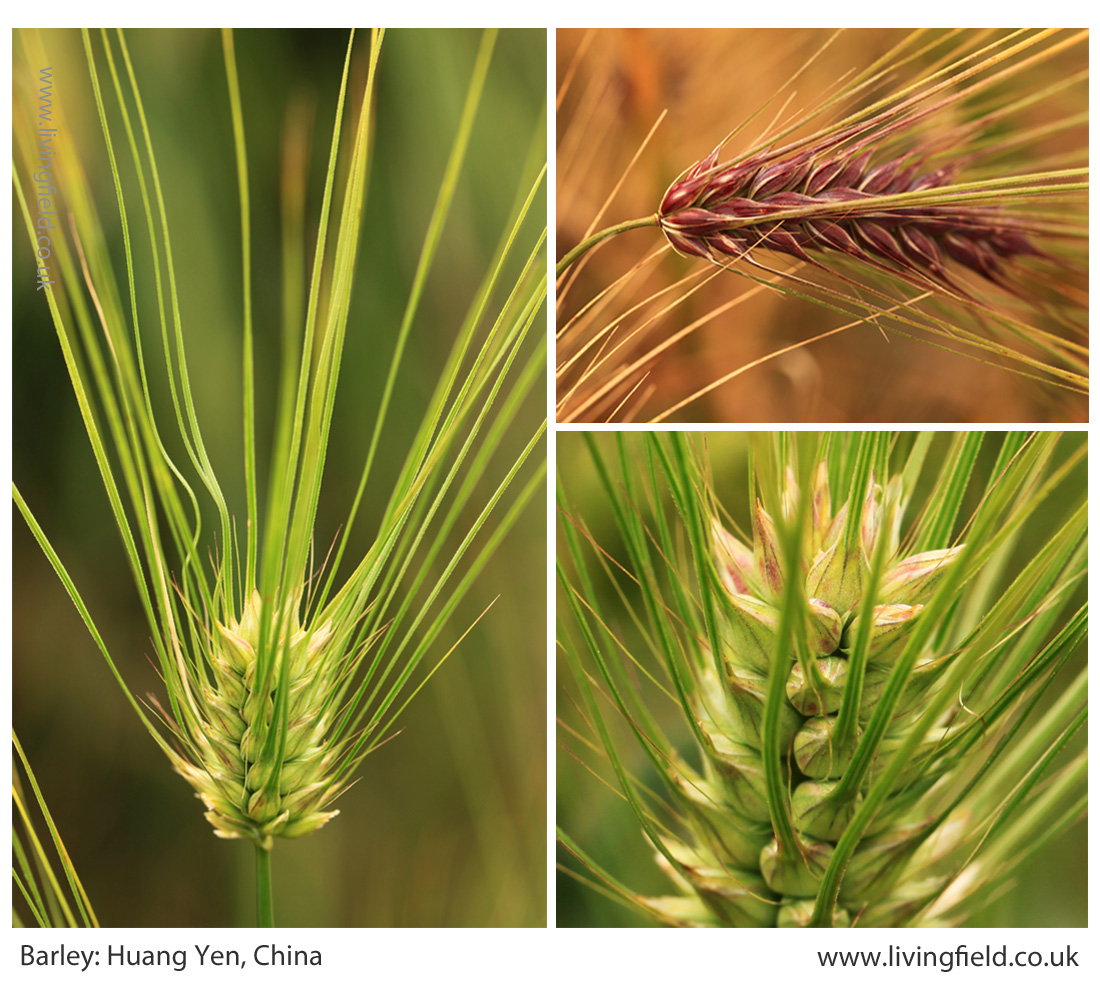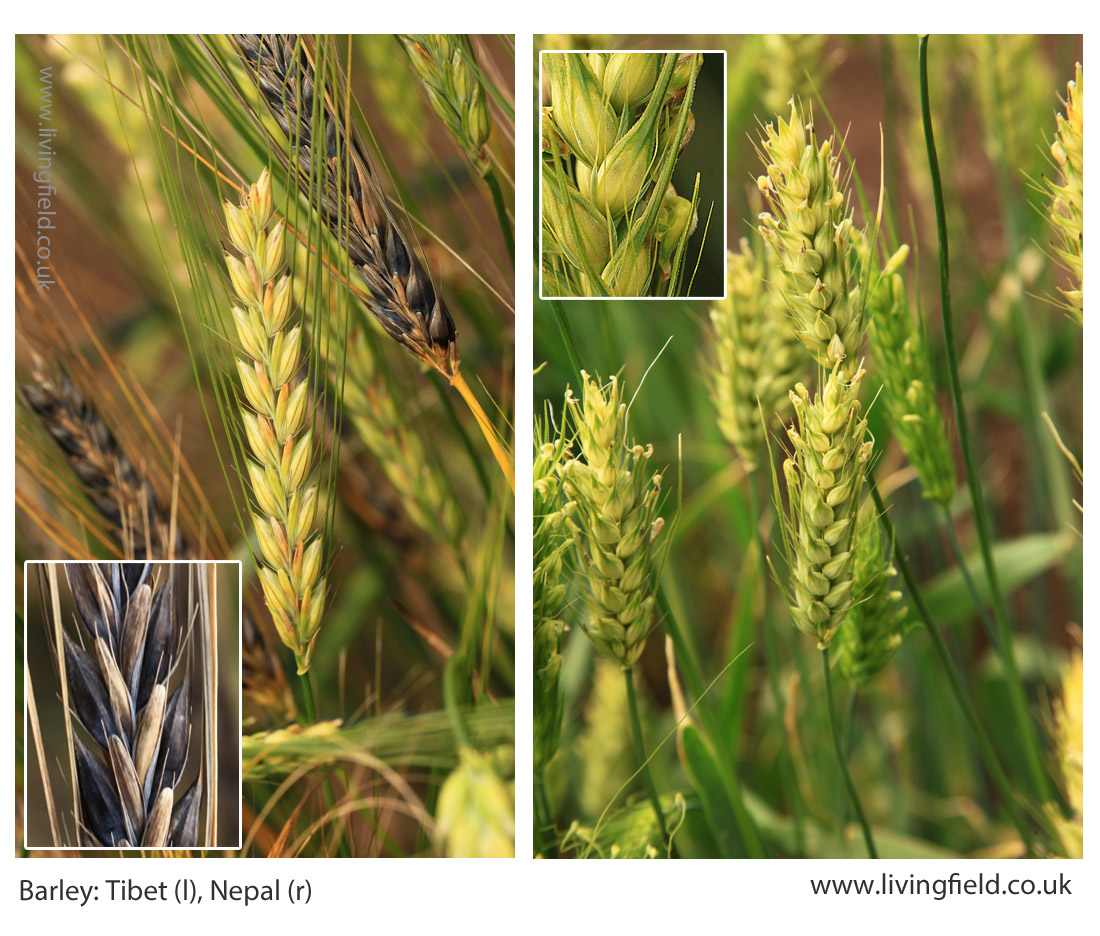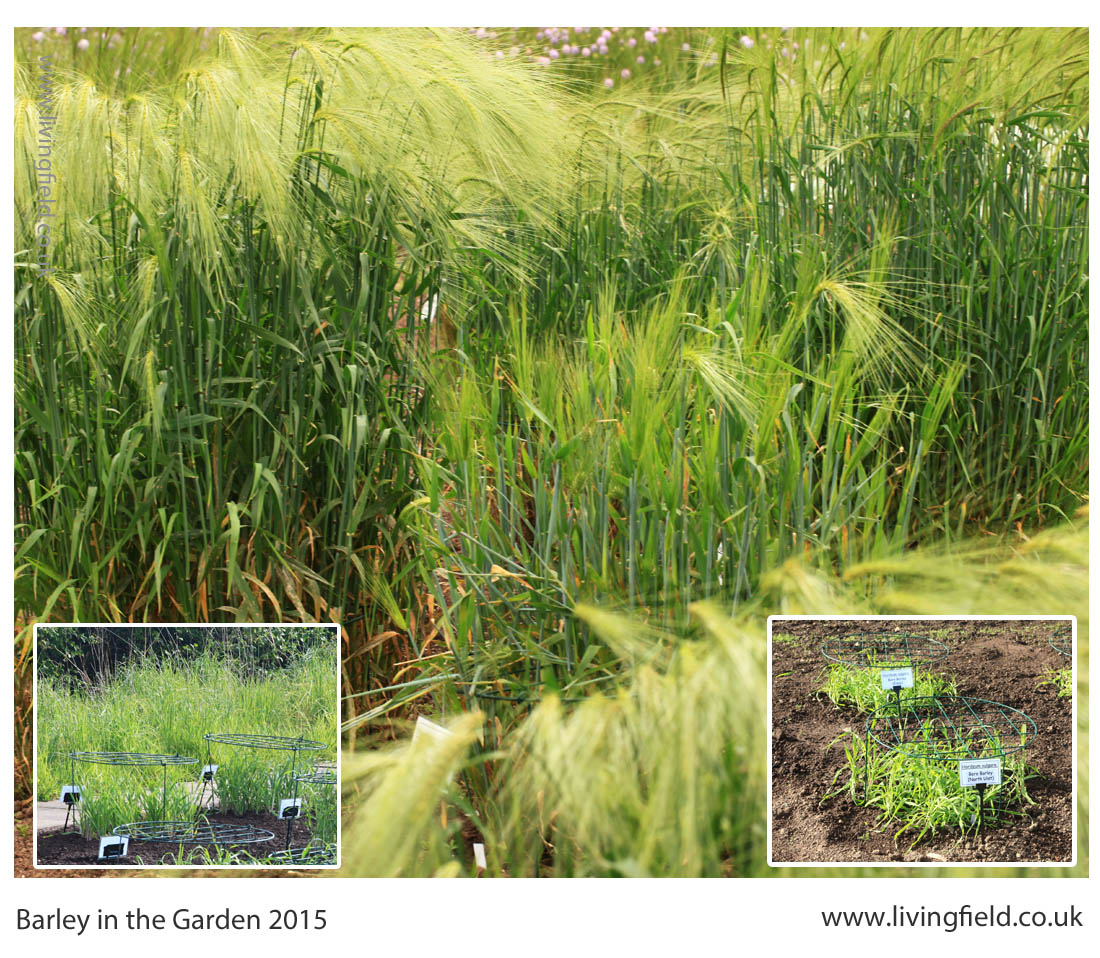The Garden has been growing early corn (cereal) species and landraces for the last few years. We’ve tried emmer and spelt wheats as well as old rye, wheat, oat and barley.
In 2015, we grew a wide selection of old barley varieties, some from Britain and some from places far away. Fascinating to see their varied shapes, colours and textures.
Since each type could have only a small patch to grow in (and we could not chance them failing), the seeds were first germinated under glass and the seedlings planted out in the arable plot in early May. They all took well and reached maturity.
Here’s what some of them looked like.

As for most cereal species, plant selection and breeding in the 20th century reduced the height of the plants, thereby allowing greater partition of photosynthate to the grain. Older varieties are mostly much taller than modern ones. The three above all have long ears on fairly tall plants (1.5 to 2 times the height of a modern barley).

Next (above) is one named Huang Yen, from China. Its flowering ear is stubby to begin with (left), its developing grains packed together, each supporting a long, stiff awn. Then the ear extends so that, as the seeds mature, they have space to fill. The seeds’ coverings or husk turn a deep red-brown as they mature (upper right).

Spratt barley grew ears that bend in at least two directions. They have a flattened ear with a pronounced two-row structure, the undeveloped grain sites visible on both sides of the stem.
Lawson and Son (1836, 1852) note a type they name Fan, Spratt or Battledore having a ‘short ear, very broad at the base , tapering towards the extremity; grain standing out from the rachis … ; awns spreading much to both sides’. The description still fits.

We grew three bere landraces, one each from Unst in Shetland, Eday in Orkney and North Uist, but have no photographs from Unst. However, they were similar, showing the awny nature of bere and the red stripes on the grain coverings. They are also like the bere we usually grow from Orkney mainland.

And last, two very different and unusual ones from the Himalaya and beyond: one from Tibet which shows an alternating two-row structure, and grain husks that turn black at maturity, and Nepal, which has short and stubby ears.
These and related landraces and old varieties tend not to mature at the same rate on all plants. Some are nearing maturity (e.g. the black ears above left) while others are still young and green.
This capacity to spread risk by producing grain over a long period is common in undeveloped crop varieties or landraces. Modern breeding and practice prefers all plants and stems on a plant to mature at the same time. It makes easier harvesting and uniform grain.
Yet in less mechanised and more risky agriculture, the natural indeterminacy of plants is a boon, specially if they can be harvested by hand and eye in sequence as they mature.

Sources, links
Joanne Russell provided barley seed from the James Hutton Institute’s barley collection (with thanks).
The plants were germinated, planted and tended by Gladys Wright and Jackie Thompson.
Notes and photographs by geoff.squire@hutton.ac.uk
Links on this site
The articles What are landraces? and Bere line give some explanation of the practice of maintaining seed as landraces in 1800s Scotland. Full (online) references to Lawson and Son’s 1836 and 1852 catalogues of the plants they grew in Edinburgh is given at Bere in Lawson’s Synopsis.
